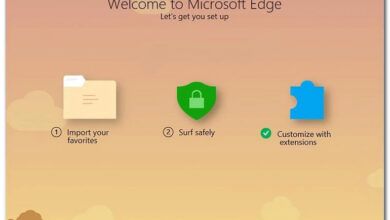How to Disable Cast or Chromecast in Microsoft Edge?
The Chromecast or Cast in Microsoft Edge is enabled by default and users can use it anytime they want. It is a pretty good feature to cast from one device to another. It was previously known as Google Cast. Users can cast websites to their TV from the Microsoft Edge browser. However, as an administrator, you can disable this feature from the Microsoft Edge browser. If you don’t want the users to cast from the Microsoft Edge browser, then this article is for you.
The Group Policy Editor is only available in the Windows Pro, Educational, and Enterprise editions. If you are using the Windows Home edition, then we have also included the Registry Editor method for you.

Method 1: Disabling Chromecast through the Local Group Policy Editor
The Local Group Policy Editor in Windows allows users to control the working environment of their operating system. The Group Policy will contain many settings that users cannot find in the Settings app and Control Panel. It also included the policy setting that can disable the Google Cast in the Microsoft Edge browser. By configuring a setting in the Group Policy Editor, the system will also update the information that setting in the Registry Editor. Now follow the below steps one by one to disable the Chromecast in Microsoft Edge:
Note: Skip this method, if you are using the Windows Home operating system on your computer.
- Open any browser and navigate to the Microsoft site. Now you need to select the version details of your Microsoft Edge and click on the GET POLICY FILES button.

Downloading the latest policy files - Extract the downloaded zip file by using the WinRAR as shown below.

Extracting the zip file - Open the extracted policy files folder and go to the “MicrosoftEdgePolicyTemplates\windows\admx” path. You need to copy the “msedge.admx” and “msedge.adml” files and then paste them into “C:\Windows\PolicyDefinitions” folder.

Copying files to system’s folder Note: The language file ADML will be found in the language folder. Copy it from one folder to another.
- Press the Windows and R keys together on your keyboard to open the Run dialog box. Now type “gpedit.msc” and press the Enter key to open the Local Group Policy Editor window.
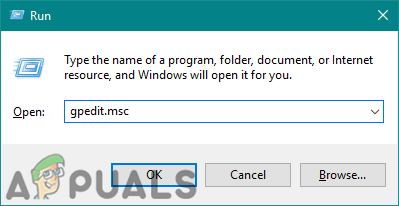
Opening the Group Policy Editor window - Go to the following path in the Local Group Policy Editor window as shown:
Computer Configuration\ Administrative Templates\ Microsoft Edge\ Cast\
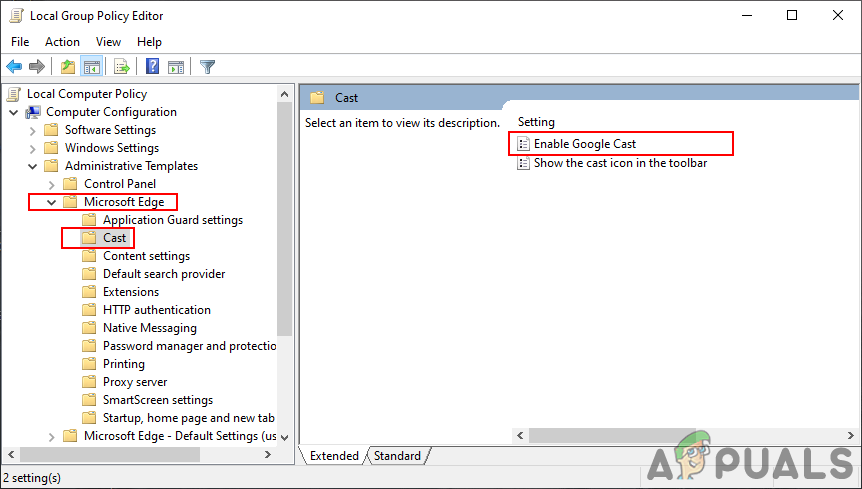
Navigating to the setting - Double-click on the setting named “Enable Google Cast” and it will open in another window. Now change the toggle option from Not Configured to Disabled as shown.

Disabling the Chromecast in Edge - Lastly, you can click on the Apply/Ok button to save the changes.
- You can always revert this back to default by changing the toggle option to Not Configured in step 6.
Method 2: Disabling Chromecast through the Registry Editor
Another method for the exact same setting is by using the Registry Editor. The Windows Registry is a database of all the settings for the operating system and applications. If you already used the policy setting, then your Registry will already have the value for this setting. However, if you are using this method without configuring the policy setting, then you will need to create the missing keys and values.
In the below steps, we have also included a step for creating a Registry backup. That is because one wrong setting in the Windows Registry can cause issues for your system. However, by following the below steps carefully, you can safely configure the setting for Chromecast:
- Press the Windows and R keys together to open a Run dialog box. Here type “regedit” and press the Enter key to open the Registry Editor. If prompted by the UAC (User Account Control), then click on the Yes button.

Opening the Registry Editor - If you want to create a Registry backup before making any new changes. You need to click on the File menu in the menu bar and then choose the Export option. Now select the location where you want to save it and name the file. Click on the Save button.

Creating a Registry backup Note: You can always recover backup by clicking on the File > Import option. Then choose the backup file that you previously saved.
- In the Registry Editor window, go to the following location as shown:
HKEY_LOCAL_MACHINE\SOFTWARE\Policies\Microsoft\Edge
- If the Edge key is missing, you can create it by right-clicking on the Microsoft key and choosing the New > Key option. Now name the key as “Edge“.

Creating the missing key - Select the Edge key, right-click on the right pane and choose the New > DWORD (32-bit) Value option. Name the value as “EnableMediaRouter“.
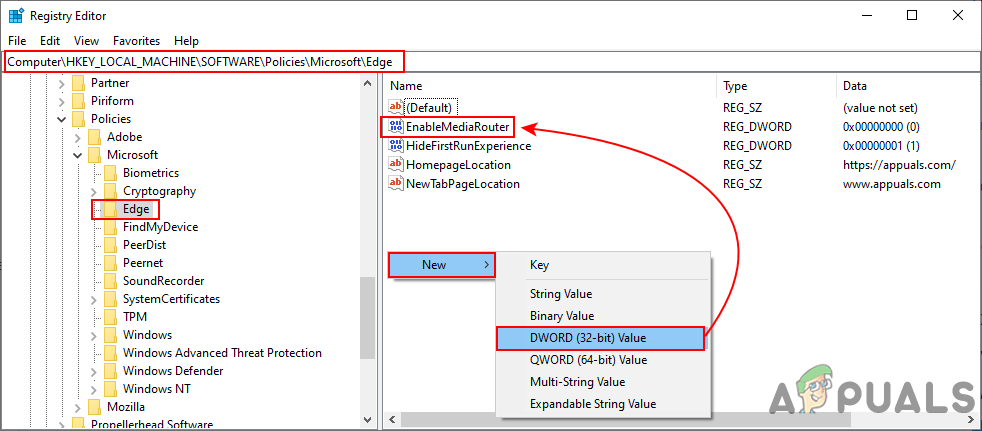
Creating a new value - Double-click on the EnableMediaRouter value and it will open a small dialog box. Now you need to change the value data to 0 to disable the Google Cast.
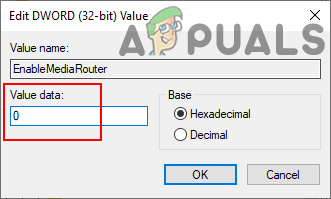
Disabling the Chromecast - If the settings are not applied instantly to the browser, you need to restart your system to apply the changes.
- You can always revert it back to default by deleting the EnableMediaRouter value from the Registry Editor.




